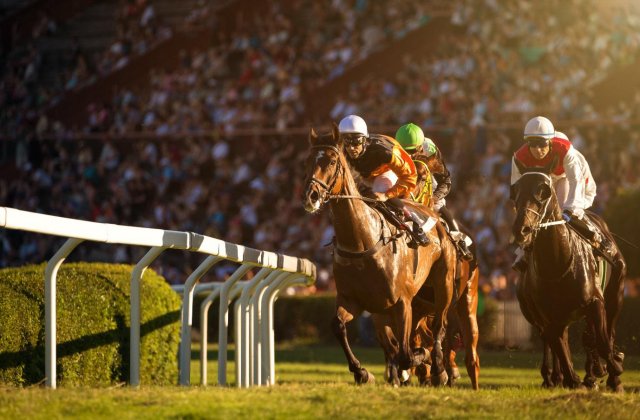|
|
 |
 |
| |
The Royal
association with
Ascot Racecourse |
|
 |
 |
| |
It’s one of
the most famous race meetings in the world, but how did Royal Ascot come to be
associated with the British Royal Family? Along with the Grand National and the
Cheltenham Festival, Royal Ascot has built up a strong reputation amongst horse
racing fans and has been a huge part of the sport for centuries
now.
With
Royal Ascot
2019 just around the corner, let’s take a look back at how it all
began and exactly why it is a royal race meeting.
Origins of Ascot
Ascot Racecourse
has been a royal location since the very beginning, as it was founded by Queen
Anne back in 1711. The racecourse has received patronage from another eleven
monarchs since then, but it wasn’t until 1911 that the summer race week
became royal.
Getting to Ascot was a dangerous journey, as racegoers
would often be targeted by highway robbers. It was easy to distinguish between
the rich and the poor as the richer classes would travel by carriage while the
poor would walk. When the railway reached Ascot in 1856 it made the journey to
the racecourse much safer for everyone.
Until the 19th century, there
was no dress code for racegoers. However, Beau Brummel, a close friend of the
Prince Regent, decreed that a dress code would be appropriate to uphold the
prestige of Ascot.
Ascot’s oldest surviving race is The Gold Cup,
which was first introduced in 1807. One tradition which remains from the
inaugural race is that the winner receives their own gold trophy to
keep.
Prominent royal
supporters
For decades throughout the 1900s, Queen Elizabeth the
Queen Mother was the most recognisable face in the crowd at Ascot. A keen horse
racing fan, she also owned several horses who proved successful throughout the
race week.
Queen Elizabeth II is another member of the royal family to
have an interest in the sport and will be in attendance for this year’s
event. Since her coronation in 1952, there have been over 70 winners at Ascot
that have belonged to Her Majesty.
One of the most iconic meetings of
Ascot came in 1910 in what is known as ‘Black Ascot’. All racegoers
were required to wear black to mourn King Edward VII, who was an influential
supporter of the sport.
Changing over
time
As you can imagine, Ascot Racecourse has seen plenty of
changes, whether it’s how well protected the racecourse is or who can
attend the race week. In 1813, the Act of Enclosure was passed by parliament,
which meant that although Ascot Heath was owned by the Crown, it would remain
in use as a racecourse and that the public were able to visit to watch the
racing.
Helen Vernet made history in 1920 by becoming the first woman to
pass the ‘fit and proper’ character test and obtained a
bookmaker’s licence. Prior to this, it was exclusively men who had passed
the test.
Until 1955, women were barred from the Iron Stand, which was
opened in 1859, and divorced men, who could enter the stand, were barred from
the Royal Enclosure. As societal behaviours changed, so did these
rules. |
| |
| |
| |
 |
|
| |
|
|
 |
|
 |